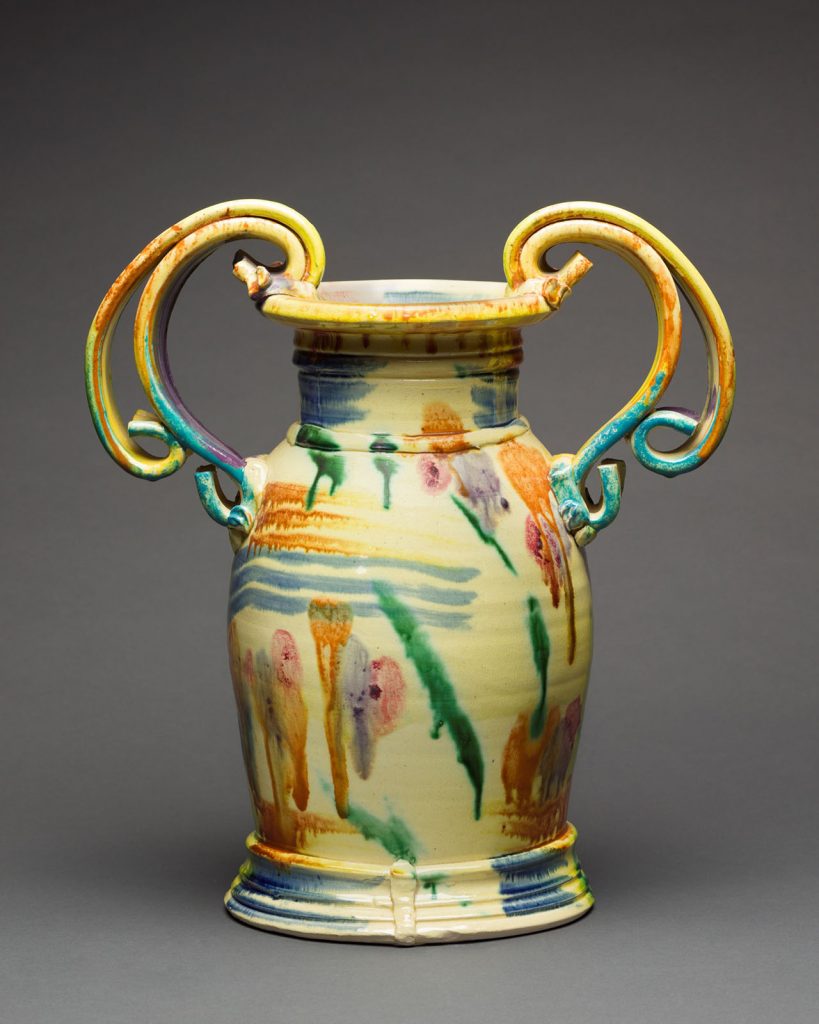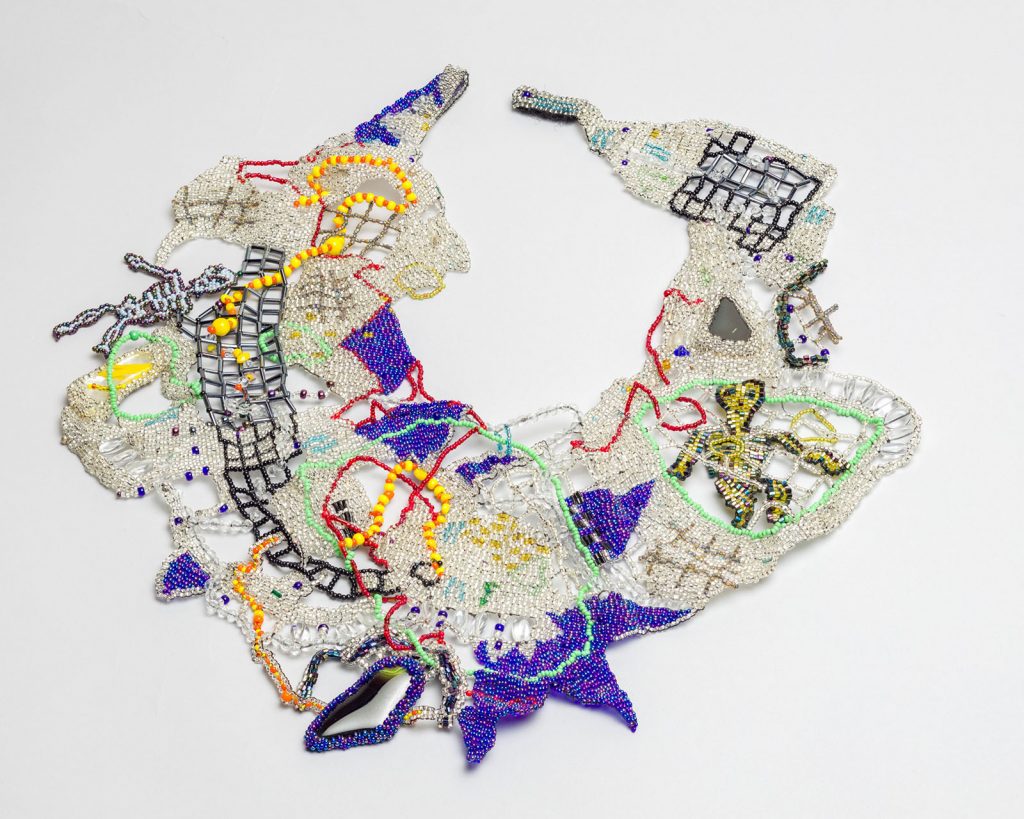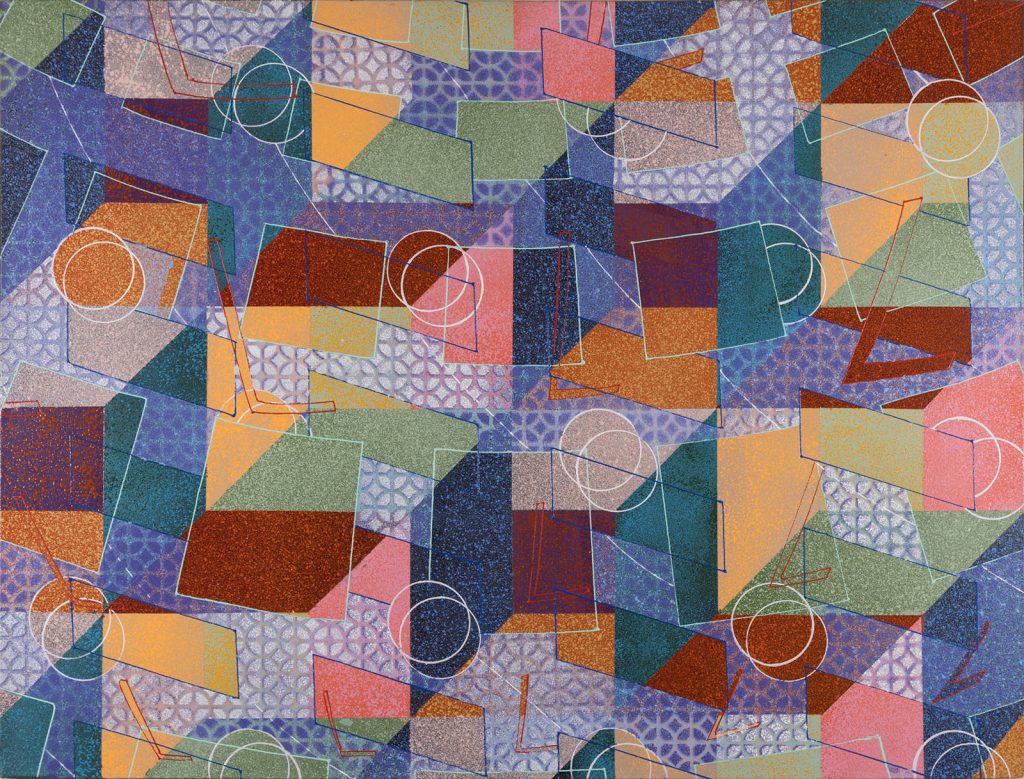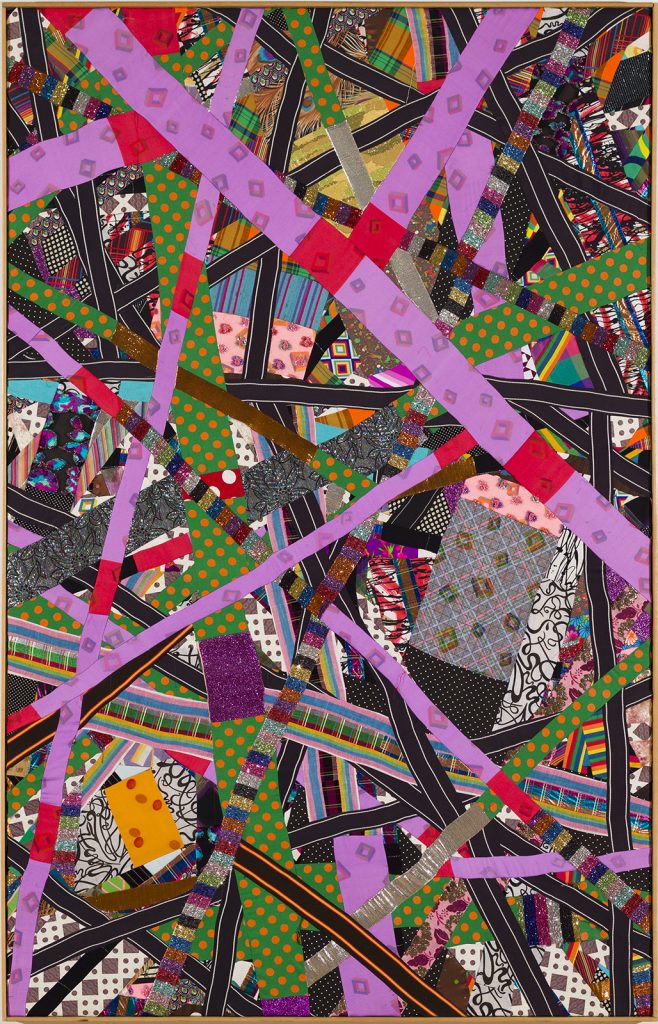EMBELLISH ME: Works from the Collection of Norma Canelas Roth and William Roth
by Dr. Robert Steven Bianchi
One of the most significant imperatives of the exhibition philosophy of the Tampa Museum of Art is to present visually stimulating works of art which are not only possessed of superior aesthetic qualities in their own right but whose subject matter is relevant. That relevance is formulated by asking its visitors to view those works of art within the context of current international discourse about pressing social issues. The permanent exhibition, Identity in the Ancient World, explores such issues as ethnicity, gender, and sexuality as lived experiences resonating with similar issues impacting upon our contemporary society.
Embellish Me: Works from the Collection of Norma Canelas Roth and William Roth is its parallel, temporary loan exhibition, showcasing a panorama of stimulating eye candy reveling in glorious patterns and captivating decorative motifs. But like the themes articulated in the Identity exhibition, Embellish Me engages its visitors in an equally compelling art historical discourse, what is art and who decides what is art.
For about a decade from the mid-1970’s to the mid-1980’s a group of artists on the East and West Coast participated in a movement now known as P&D, the Pattern and Decoration Movement. The participating members, mostly women, understood that artistic discourse was dominated by men who, it seemed, arbitrarily and somewhat disparagingly dumped textiles, basketry, and the like into the pejorative “craft” category, effectively divorcing those creations from the supposedly superior category of “fine art.” That hierarchical categorization had an unfortunate misogynist side effect, because, traditionally, from the dawn of civilization women were the dominant weavers of textiles and baskets. The P&D movement’s imperative, therefore, was to set aside such rigid hierarchies and in so doing, intercalate the contributions of women into the ages-old continuum of visual creations. The movers and shakers of P&D also correctly observed that textiles and baskets were themselves often imbued, as a result of the materials used and the patterns employed, with an intrinsic sensuality effected by their retinal-commanding ornament.
The combined oeuvre of the participants of the P&D Movement offered a viable alternative to what some have termed the general manliness of modernism. It demolished the artificial boundaries traditionally separating fine art from craft. Significantly P&D succeeded in elevating the status of women as artists in their own right.
Joanna Robotham, the Curator of Modern and Contemporary Art at Tampa since 2016, collaborated with Dr. Amy Galpin, former Chief Curator at the Frost Art Museum (now Executive Director and Chief Curator at MOAD in Miami) on Embellish Me. Robotham reinforces the added significance of this exhibition for our Tampa Bay community because, as she rightly stresses, the works of view are from the collection of Norma Canelas Roth (1943-2022), and her husband, William. Mrs. Roth was born in Santurce, Puerto Rico, is an alumna of the University of South Florida, and lived most of her life right here in the Sunshine State. Early on she recognized the marginalization of women artists because they were often ignored, and hence neglected, by mainstream gallerists and collectors.

Photograph by Paige Boscia. Courtesy of the Museum.
The exhibition space is sumptuously designed (Figure 1) with its aubergine-colored accent walls and strategically-placed benches affording visitors various vantage points from which to contemplate the works of art, each one of which occupies its own environment. Every work stands alone and proud, there is no clutter, there is no crowding.

Among the works of art on view are an exuberant vase (Figure 2) potted by ceramist Betty Woodman, one of the mainstays of P&D. The vase is noteworthy for both its size and consummate polychromatic effects.

The necklace (Figure 3) by Joyce Scott, created from glass beads and semi-precious stones, is a deceptive masterpiece in miniature because it deserves more than a passing glance. This work, informed by Scott’s Afro-American heritage, alludes to current social issues by virtue of the initially inconspicuous skeletons which are subtly intercalated into its overall, seeming ornamental design.

Equally deceptive and likewise worthy of contemplation is the screen (Figure 4) by Jane Kaufman, a leader of P&D. She transformed the skills of embroidery and sewing, taught to her by her Russian-born grandmother, by introducing bugle beads and metallic threads, often glued together, into her compositions. She also foregrounded feathers into her oeuvre, as seen in this exacting, meticulously designed screen in which each pheasant feather appears to be so identical that one’s first impression is that they had been mechanically reproduced rather than being selectively plucked from nature.

Toby Robbin was a member of an improvisational theater group and a member of a men’s consciousness-raising group before joining the P&D. There his oeuvre concentrated on illusion effective by compositions of polyvalent geometric patterns. The repeated patterns of shape and color in 1978-21 (Figure 5) are a tour de force, oscillating as they do between the linear and the painterly, the static and the kinetic.

Lucas Samaras participated in P&D, particularly in the 1970’s when he began his Reconstruction series, of which Reconstruction #39 (Figure 6) is representative. He composes his geometric motifs from swatches of fabric which he combines into compositions with a sewing machine. The resulting works of art purposefully resonate with the aesthetic concerns of the Russian Suprematist Art Movement in which the traditional distinction between foreground and background are blurred.
Embellish Me, therefore, engages not only the visitor’s eye with its dazzling array of decorative, polychromatic ornamentation but challenges the visitor to reassess the place of ornament within one’s own environment. That mental engagement may force one to rethink the attraction that we have either for patterned bed sheets or for wallpaper. And that rethinking should awaken everyone to the role that pattern and ornament have played in the visual culture of virtually every civilization since the beginning of time.
Embellish Me: Works from the Collection of Norma Canelas Roth and William Roth is organized by the Patricia & Philip Frost Art Museum at Florida International University, Miami, and presented in collaboration with the Tampa Museum of Art. The exhibition is on view through July 28, 2024.
Dr. Robert Steven Bianchi, a critical art historian, is currently chief curator of the Ancient Egyptian Museum Shibuya in Tokyo. During his career, he has curated exhibitions of contemporary art in New York City, Antibes, and Tokyo. He has previously written about exhibitions in the Tampa Bay area for Bay Art Files.
